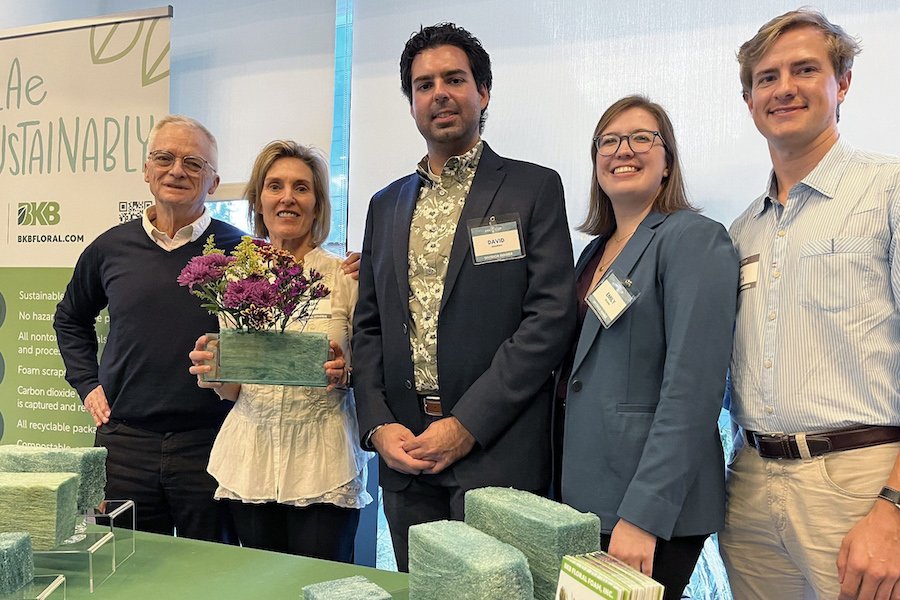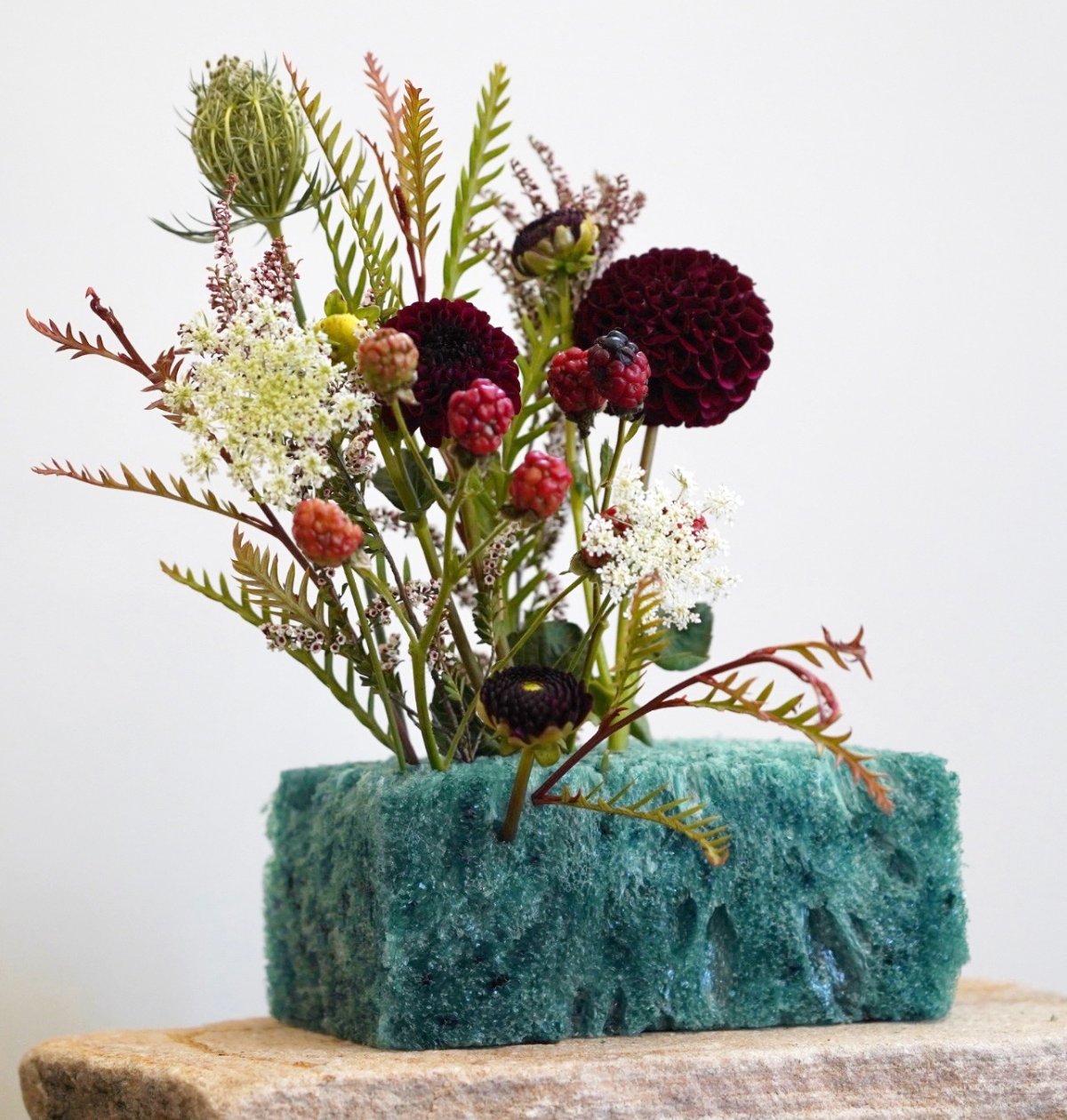CSE alumnus helps MN Cup winner BKB Floral Foam bloom

Goldfeld (center) in the above image with (from left) BKB Floral Foam chairman Ian Butcher, co-founder and chief executive officer Dundee Butcher, research scientist and CSE alumna Emily Wilborn, and chief financial officer Sam Waring. Photo courtesy of BKB Floral Foam.
Startup leverages University research to create sustainable display foam for the floral industry
Dec. 6, 2022
David Goldfeld met London florist Dundee Butcher at a dinner party in 2014, back when he was an undergraduate student studying chemistry in Chicago. Butcher had been looking for a sustainable solution for making floral foam, a toxic, non-degradable material used by florists to make intricate flower arrangements. When she explained her idea for a compostable foam to Goldfeld, he said, “Yeah, that shouldn’t be too hard.”
Fast forward to 2016, and Goldfeld began his chemistry Ph.D. program at the University of Minnesota Twin Cities working with College of Science and Engineering (CSE) Professor Marc Hillmyer, director of the National Science Foundation’s Center for Sustainable Polymers.
“CSE is at the forefront of sustainable materials, and I had wanted to come to the University of Minnesota to work with one of the many incredible polymer chemists here,” said Goldfeld, who received the University's Wayland E. Noland Fellowship in Chemistry as a student.
“I brought the [sustainable floral foam] project to Marc, and he thought it sounded like an interesting idea. Then it became a two-year project to develop the technology, which is being commercialized as BKB.”
BKB Floral Foam, Inc., now a fully fledged startup with Butcher at its helm, is commercializing the compostable foam that Goldfeld and his team developed at the University. Goldfeld came on board as the chief technology officer in 2022, and the company recently won this year’s University-sponsored Minnesota Cup competition.

Step one: Make the product
While a lot of chemistry majors pursue analytical research, Goldfeld always knew he wanted to do something more hands-on, which is what led him to the idea of being an entrepreneur.
“Floral foam is something that a lot of average people in the public don't really think about, but it’s a huge market, about $500 million worldwide. You've got florists in every city, and every single person has probably bought flower arrangements for a funeral or for a wedding,” Goldfeld said.
“It was really exciting for me to be making a product that could make a difference and dramatically change the landscape of an entire industry, and could be in people's hands in a couple of years.”
This biggest challenge in creating a sustainable floral foam was finding a material that was available, economically viable, and could emulate the performance of traditional foam. Goldfeld and his team at the University of Minnesota eventually settled on polylactide, a renewable plastic that’s made from resources like corn and sugarcane. They experimented with different modifications until they found a solution that worked for holding flower stems.
According to Goldfeld, there was no better place for it all to happen than the University of Minnesota, where the NSF Center for Sustainable Polymers brings together brilliant researchers from chemistry, chemical engineering, and materials science.
“What I think makes the entire University of Minnesota stand apart, but especially in polymer science, is the community that's been built here,” Goldfeld said. “I've worked at several other schools, and they have maybe one or two professors and students who are good at polymer science. But here, there are so many people that it's just mind-boggling in comparison.”
“When you go to a seminar or event for the Polymer Group at the University of Minnesota, it’s basically a gathering of minds equal to the best scientific conferences in the world.”
Step two: Bring product to market
At the Bloomington, Minn., production facility where Goldfeld works, the BKB team is already pumping out bricks of the sustainable, non-toxic foam. He’s aided by two other College of Science and Engineering alumni, Emily Wilborn (M.S. Chem ‘22) and Nicole Wills (B.S. Chem ‘21).
Goldfeld hopes that their venture will be operational by mid-2023, with the goal to produce around 700,000 bricks of foam per month.
BKB Floral Foam couldn’t have done it, he notes, without the University of Minnesota and its Office of Technology Commercialization, which has helped generate more than 200 startups since 2006.
“The University of Minnesota is much more straightforward and kinder to the idea of an entrepreneurial startup,” Goldfeld explained. “That made a big difference for us. A lot of other technology agreements elsewhere are really complicated, dealing with different percentages depending on different markets and having all sorts of caveats and catches. The University of Minnesota made this idea of technology transfer easier to navigate, and I think that was one of the things that really drove BKB to agree to move forward with a university project.”
Learn more about the startup and their sustainable solution on the BKB Floral Foam website.
Story by Olivia Hultgren
If you’d like to support students and research in the University of Minnesota College of Science and Engineering, visit our CSE Giving website.
